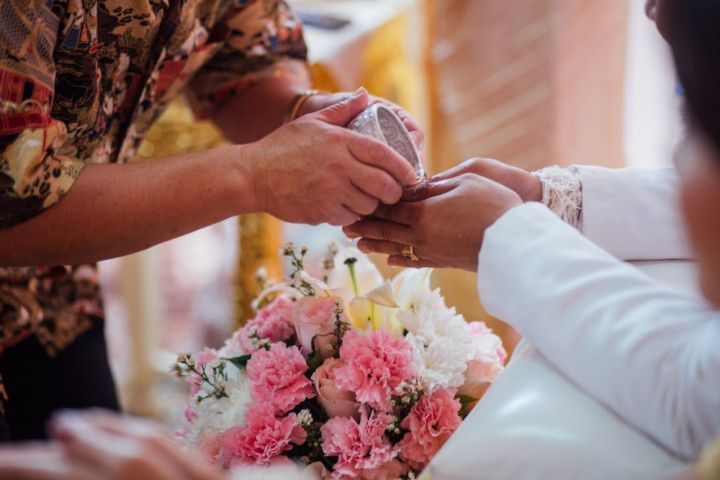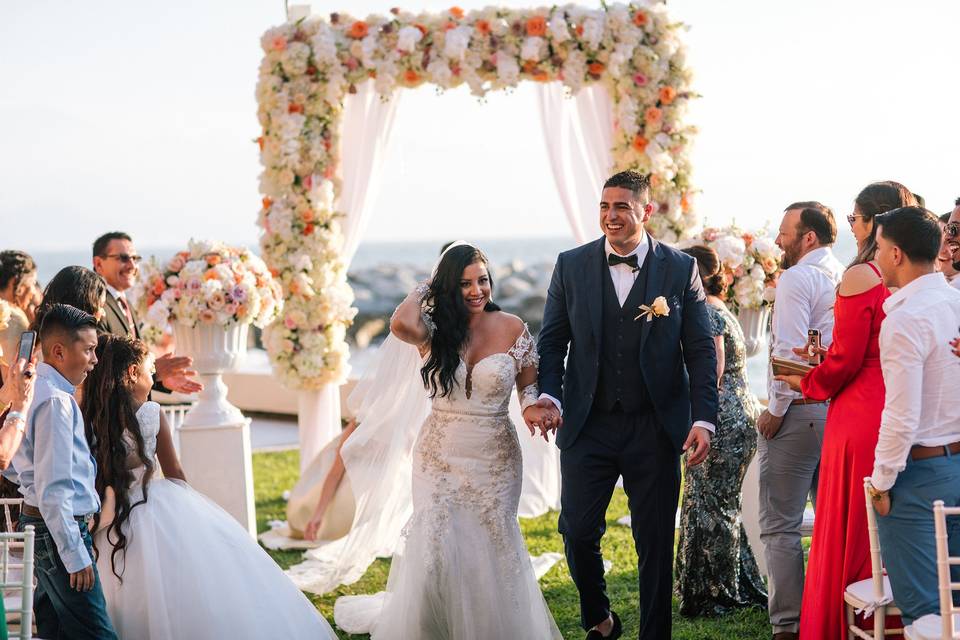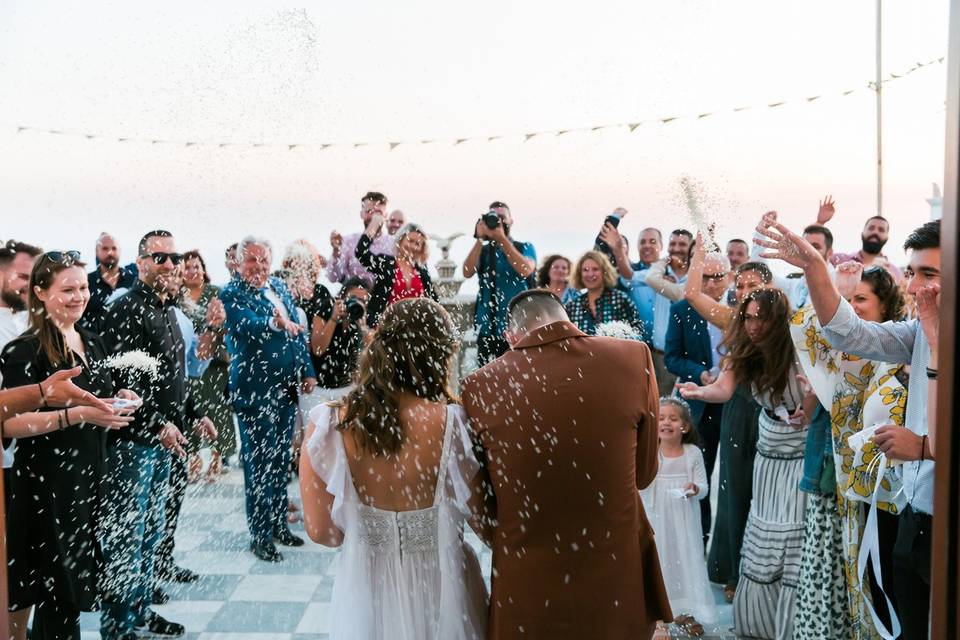5 Major Mexican Wedding Traditions, Explained
Incorporate your Mexican heritage into your wedding with any of these symbolic Mexican wedding traditions.
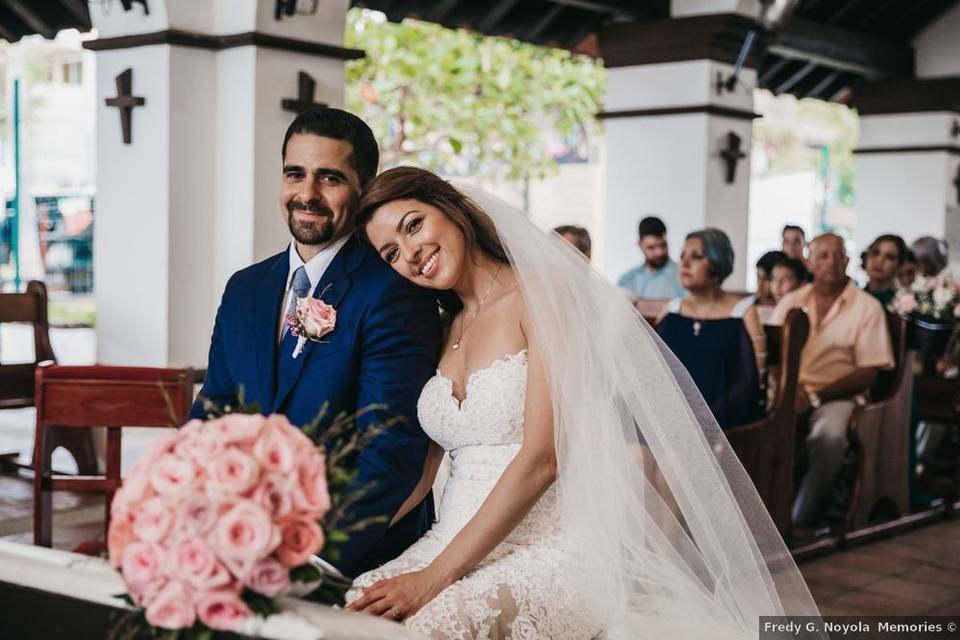
Modern Mexican weddings are a beautiful mezcla of ancient traditions and newfangled trends. But, even the most progressive couple might want to infuse some of these major Mexican wedding traditions into their ceremony or reception. When selecting wedding rituals, it always helps to have some backstory on their meanings, so you can choose ones that resonate with you as a couple.
You’ll fall in love with these symbolic Mexican wedding traditions and their meanings.
Los padrinos y madrinas (wedding sponsors)
Like other Christian denominations—Greek Orthodox included—it’s common for Mexican weddings to include involvement from sponsors. In Mexico, sponsors are referred to as los padrinos, the godparents or godfathers, or las madrinas, the godmothers. They serve a similar role in the wedding ceremony as godparents would at a baptism and are chosen because of their special relationship to the couple. Far from a ceremonial title, padrinos and madrinas have important responsibilities in a Mexican wedding, including paying for certain aspects of the celebration, and are included in the wedding ritual. Sponsors may be assigned a specific duty, like wrapping the wedding lasso around the couple or carrying the arras during the ceremony. Others might walk down the aisle after the couple’s parents as padrinos de honor and still others might host the bridal shower as los primeros madrina.
Las arras matrimoniales (wedding coins)
This Mexican wedding tradition dates back to the Roman conquest of Iberia and traveled to Mexico, Latin America and the Philippines via colonial Spain. The arras are a set of 13 gold coins, that are presented to the bride as a symbol of the groom’s trust in her. For Catholic couples, this tradition is incorporated into the wedding mass with an intricately decorated gold box or tray that the priest blesses at the beginning of the ceremony. The number 13 is significant as it represents Jesus and his 12 apostles. The coins themselves symbolize the groom’s financial treasures. By gifting them to the bride, he is showing that he trusts her with his wealth, and his money is her money.
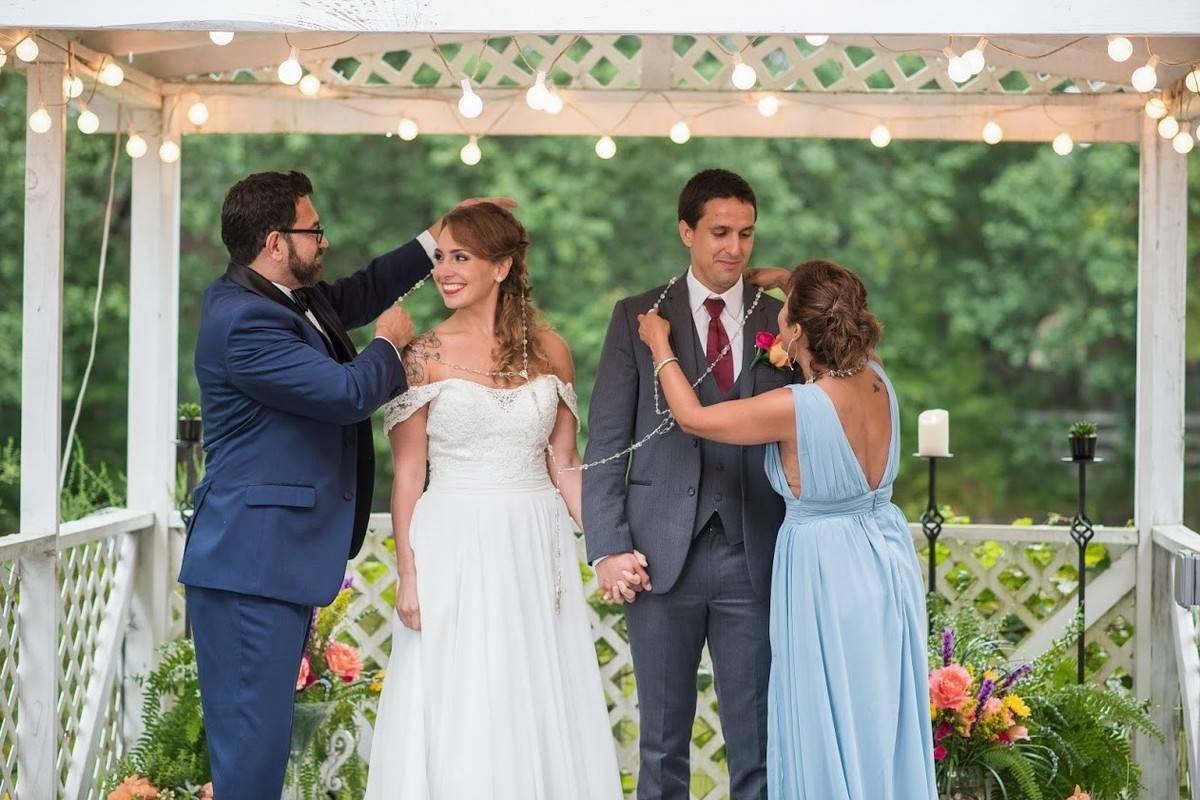
El lazo (wedding lasso)
Symbolizing everlasting love and unity, an enduring Mexican wedding ritual involves el lazo, or a wedding lasso. The lasso is really more of a string of flowers and rosary beads, usually, and is placed around the shoulders of the couple—first the bride, then the groom—after the wedding vows to form a figure eight as the priest or deacon blesses the couple’s marriage. This is one of the Mexican wedding traditions closely tied to Catholicism as the significance of creating the number eight with the lasso also represents new beginnings in the Bible. Couples wear this lasso for the remainder of the mass until it’s removed by the priest.
Mexican wedding money dance
The money dance (sometimes called a dollar dance in the United States) is another Mexican wedding tradition that arrived from Spain. The specific origin of these dances, which are also common in Latin America and the Phillipines, isn’t known, but they’ve taken on the significance of wishing the couple luck in their marriage. For this tradition, guests at the wedding reception have bills ready to pin on the couple in exchange for a dance. Couples and their families can get creative about how to collect the notes, though. Some will simply throw the cash on the dance floor while others will designate someone to collect the cash so as not to ruin the wedding attire.
La Tornaboda (wedding after-party)
Translated to English, it means something like a wedding return, but la tornaboda is actually quite familiar to American couples. It’s a smaller gathering of close family and friends that takes place after the larger wedding reception, something we’d liken to an after party. The tradition began in Mexican communities where weddings were essentially an open invitation for all to come and eat and dance, so a reception might be hundreds strong. La tornaboda allows couples to celebrate with their nearest and dearest after the bigger fiesta is done.

